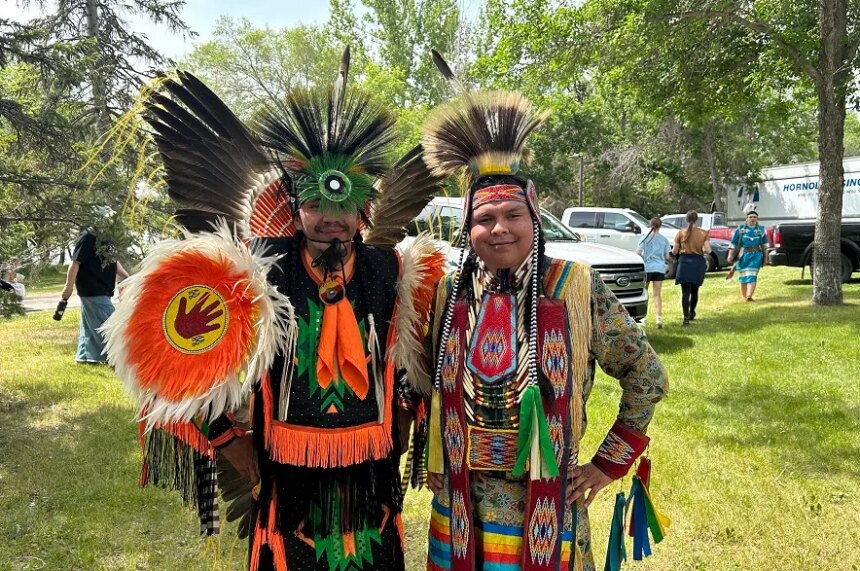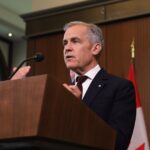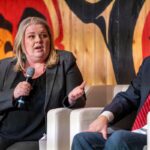In the early-morning hours yesterday, Saskatoon’s Victoria Park filled with an unmistakable energy as hundreds of residents gathered for the annual “Rock Your Roots” walk. The event, marking its eighth year, has become a touchstone for the city’s commitment to reconciliation.
“This isn’t just another walk in the park,” said Elder Mary Whitstone, who opened the ceremony with a traditional blessing. “When we walk together, we’re showing our children what reconciliation looks like in action.”
By mid-morning, the crowd had swelled to nearly 800 participants, according to organizers from the Saskatoon Tribal Council. People of all ages and backgrounds moved through downtown streets, many wearing orange shirts that have become synonymous with acknowledging residential school survivors.
Chief Mark Arcand of the Saskatoon Tribal Council told me this year’s turnout exceeded expectations. “Eight years ago, we had maybe 200 people. Today, look around—this is Saskatoon showing up for truth and healing.”
The walk’s route intentionally passed sites of significance to local Indigenous communities, including where the former Saskatoon Indian Industrial School once stood. Participants paused at these locations while knowledge keepers shared histories often missing from mainstream education.
“My grandmother survived that school,” whispered Darlene Morin, 42, a participant who brought her three children to the event. “Walking here with my kids helps them understand their heritage in ways my grandmother never could.”
City councillor Hilary Peterson, who joined the walk wearing a ribbon skirt gifted by local artisans, noted the event’s evolution. “What strikes me is how this has grown beyond symbolism into concrete community building,” she said. “Today I’ve witnessed conversations between elders and young people that simply weren’t happening a decade ago.”
Indeed, the generational connections were visible throughout the morning. Youth from Bedford Road Collegiate performed traditional drumming while seniors from Pleasant Hill shared stories with curious youngsters from across the city.
The latest Statistics Canada data shows Saskatchewan’s Indigenous population growing at more than three times the rate of the non-Indigenous population, with nearly 20% of the province projected to identify as Indigenous within a generation. Events like Rock Your Roots reflect this demographic shift while building bridges between communities.
“Reconciliation isn’t an Indigenous issue—it’s a Canadian responsibility,” explained Dr. Winona Wheeler, Indigenous Studies professor at the University of Saskatchewan, who attended with several of her students. “What we’re seeing today is grassroots commitment to that responsibility.”
Following the three-kilometer walk, participants gathered for a community feast featuring traditional foods. Local artists showcased Indigenous crafts while organizations like READ Saskatoon distributed books by Indigenous authors, continuing their literacy partnership with the Tribal Council.
The timing of this year’s event carried special significance, occurring just weeks after the federal government announced additional funding for community-led reconciliation initiatives. The $25-million package, announced last month by Indigenous Services Minister Patricia Hajdu, allocates specific resources to urban Indigenous communities.
“The funding matters, certainly,” noted Arcand. “But what matters more is that people keep showing up year after year, even when reconciliation isn’t making headlines.”
For many attendees, the walk’s power lay in its simplicity. “You don’t need fancy words to walk alongside your neighbors,” said retired teacher Jim Knutson, who has participated every year since 2018. “You just need to show up and listen.”
As the event concluded with a round dance that expanded to encircle the entire park, seven-year-old Amelia Johnson perhaps summarized it best: “Today I learned my city has lots of stories I never heard before.”
The Rock Your Roots walk represents one day in Saskatoon’s ongoing journey toward reconciliation—a journey that continues through community partnerships, educational initiatives, and the daily interactions of citizens committed to understanding our shared history.






